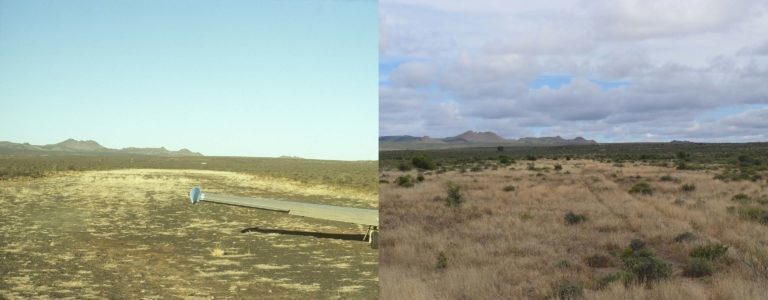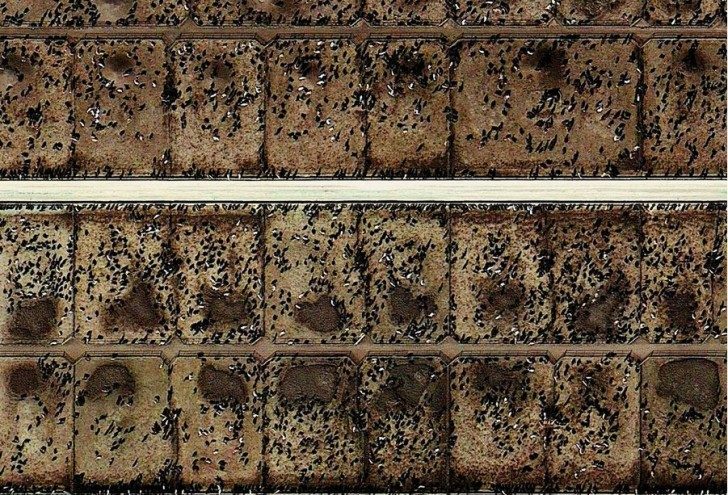
However (you knew that was coming), many of your arguments and statements about global ecology have been clouded by a misunderstanding perpetuated by biotech and global corporate agricultural interests. Briefly, let's look at the two big Red Herrings. Afterwards, I will suggest a path forward to bring strength and resilience to the plant-based movement. [Read Part 2]
Grassland ecology is quite simple.
- Grass puts green leaves upward and roots downward during the growing season. The leaves use air, water and sunlight to make sugars. The carbon and water are stored in the roots as carbohydrates: carbon + water. If the plant is a food crop, we can often eat the leaves, stem and roots and derive lots of nourishment from them. If the plants are mainly cellulose, our stomachs have no way to digest them.
- Grasses (and other plants) evolved with ruminant animals. Ruminants have extra stomachs and sturdy mouths to break down, ferment and digest the cellulose in grasses so the nutrients in them can be absorbed and converted to meat, fat and energy for the animal. What's left is piss and poop, burps and farts.
- Grass must be eaten down by ruminants to survive. Without grazing, grasses grow high, desiccate and oxidize. They slough off their roots and after a few years stop growing altogether. By grazing most of the plant leaves and moving on to new pastures, ruminants revitalize grasslands. Without grazing, the land dies.
- Grass is not just what you see above ground. Perennial grasses put down deep roots during the growing season; around the roots a universe of biological activity occurs. The roots exude sugars to attract the previously unconnected microbes and fungi underground. These organisms network themselves and begin to breakdown bedrock into minerals the plant's roots can absorb. The plant can signal for nutrients and water, or tell the underground miners it is under attack and to create substances to help the plant fight insects and diseases.
- After a grazing animal eats its leaves, the plant lets most of its root system go dormant. Later it begins growing new roots to reestablish its nutrient and immune support system underground. Here is the magic: the old roots, made of carbon and water, serve as the foundation of new topsoil. Carbon rich soil continues to generate biological activity underground. It forms a sponge that can absorb huge amounts of water from rainfall or flooding, which it slowly releases over time: drought tolerance and flood resilience. This process is critical to carbon sequestration. Health grasslands take carbon from the atmosphere and place it safely underground.
- Grasslands without ruminant herds moving from place to place are called deserts. The grass cannot survive. Herds that are left to roam and graze at will don't hack it. Grasslands need animals to trample the soil crust, digest the leafy matter, deposit poop and pee, and then move on so it can resurrect itself and the soil below: managed grazing.
Most meat animals are fed by growing GMO corn and soybeans in vast chemical-intensive monocultures that devastate the land (and farmers and rural communities, but I've covered that elsewhere). The animals are kept in concentrated feeding areas, served rations that are inappropriate to their digestive systems, fed antibiotics and hormones to make them grow faster, given medications to keep them somewhat healthy in horrible circumstances, then led off to slaughter without ever having set hoof on vegetation or having grazed fresh grass. Their contaminated manure is collected in fetid lagoons until it floods into waterways or is sprayed on fields. Yeah, that's all horrible and it rightfully has led many folks, including not a few ranchers, to swear off meat. Agreed.
The problem is, many vegans and vegetarians have become convinced that concentrated animal feeding operations described above are the only standard by which to judge plant-based foods and synthetic meat. Nope. We need to judge what we eat based on the best practices of livestock husbandry as it is done in concert with natural systems that we as a species on this planet are fundamentally dependent on. We must have managed ruminant grazing to stop and reverse desertification. We must integrate livestock into agriculture to place atmospheric carbon back underground and provide protection against floods and droughts brought on by climate change. A plant-based diet, and anti-livestock advocacy, fails to take this ecological science into account.
A plant-based diet, and anti-livestock advocacy, fails to take ecological science into account. By all means, eat what makes sense to you. But don't ignore the health of the planet. Protect grasslands. Fight concentrated feeding. Don't denigrate all livestock.
After considering this article, take another look at the marketing messages used by synthetic meat companies like Impossible Burger. They state their product is fundamentally better than beef, but their measures are all based on bad industrial livestock practices. Let's be blunt: if we all ate Impossible Burgers and abandoned livestock husbandry, the planet would die within a few years. Impossible Burger depends on your ignorance of Grassland Ecology 101. Comparing lab-grown meat only to industrial beef is the Red Herring that keeps the plant-based food movement from being taken seriously by real farmers and ranchers. When you repeat the claims of the makers of synthetic food, especially meat, you are repeating nonsense created by marketing teams and tested on people just like you.
When you sing the song of synthetic meat, you become the unwitting chorus of nonsense composed by marketing teams to confuse and convince people just like you.
Synthetic meat (and "heme") is grown by organisms that have been genetically modified, and which are fed steeps derived from genetically modified crops. These are things the human species has never eaten or digested before. They are unregulated, unlabeled and undisclosed. It's not normal, which is why the global biotech lobby is spending hundreds of millions of dollars on influence campaigns to make it seem normal.
Here's what's normal: ruminant animals grazing in a herd and moving along when the grass is sufficiently low. Happy health animals with no need for medicines or grain. Healthy soil with no need of fertilizers or herbicides. So, sure, go plant-based. But don't fail to respect the plants.
It makes sense to advocate against the terrible practices of the livestock industry. It also makes sense to advocate for regenerative humane practices that global ecology depends on. And it's not a bad idea to reduce consumption of good meat, too. The Earth can support a finite number of grassland animals.
Comment: Too bad, the guy was on a roll but just had to trot out the tire "reduce your meat consumption" line at the end. Better idea: don't reduce your meat consumption.
See:
- Study finds red meat as part of a healthy diet linked to reduced risk of multiple sclerosis
- 'Bad advice': Group of doctors in Canada lobby to change Food Guide, calling for more meat and fat in diet and less carbs and sugar
- Scientists are now saying that eating red meat and cheese is good for your heart
Last word, to head off some comments. It's true that there is no such thing as "humane" slaughter. I get that. I've seen cattle "put down" (shot through the head with a .357 magnum, in case the euphemism is offensive). You don't get used to it. However (you knew that was coming), animals are going to die one way or another. It's not "humane" either when an old cow or young calf is left to be attacked by predators, or when disease takes hold and an animal suffers at the edge of the pasture. If we are not going to kill and eat the animals, but we want to save our planet, we must accept their deaths either way. And if ranchers can't harvest animals to pay the cost of managing herds and improving the soil, eating vegan will require a hefty tax to keep those farmers on the land and providing those services.
Otherwise, we better get used to a dry, sandy planet.




However (you knew that was coming),
manysome of your arguments and statements about global ecology have been clouded by a misunderstanding perpetuated by biotech and global corporate agricultural interests. Briefly, let's look at the two big Red Herrings. Atmospheric CO2 is not dangerous, and does not need sequestrating. Yes, it is a bad idea to reduce consumption of the most nutrient dense food appropriate to your species.